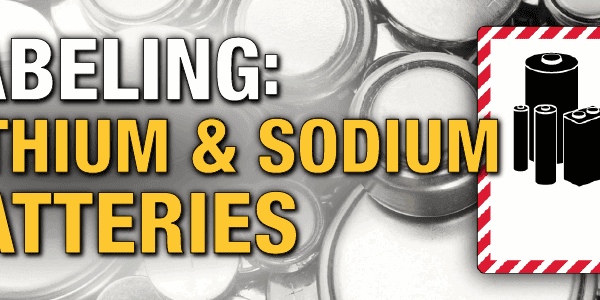What Do the Regulations Say?
Normally when considering whether or not a material or substance is to be assigned to Class 8, the preferred method is an in vivo (living animal) or in vitro (“in glass” or simulated test-tube) determination of the effect of the sample on living tissue. In addition the effect of corrosion of metals is considered for the lower hazard (PG III) aspect of the class.
I had a question the other day wherein a sample of a material tested “positive” according to the UN Manual of Test Procedures (5th Ed.), Part III, 37 yet the classification was being questioned by a (dedicated) potential carrier. The material tested “pitted” the standard aluminum alloy to a depth greater than that specified in the 37.4.1.4.2 (“localized”) criteria. The consignor classified the material as Corrosive based on the consulting lab’s report of this result which stated that the product was a “candidate for … Class 8”. The trouble was that the sample was negative in the “uniform” (37.4.1.4.1- equivalent to the 6.25 mm/y criteria) portion of the test.
The latter is the only criteria currently referenced for Class 8 when considering effects on metal.
How this could become confusing
i.e. The wording in the various regulations do not say the equivalent of:
“The substance is Class 8, PG III if a positive result is obtained in UN test 37.4”;
but do say the equivalent of:
“The substance is Class 8, PG III if you get a positive result in a uniform corrosion test (equivalent to 6.25 mm/y) such as UN test 37.4”.
The above is consistent within the IMDG Code, IATA DGR, US 49CFR – all of which reference the UN Manual of Tests as an example of an acceptable protocol- and Canada’s TDGR. The Canadian TDGR classification wording is the same- only quoting ASTM G 31-72 (reappr.1995) as the reference method. ASTM G 31 also has both criteria available. The UN Model TDG (“Orange Book”) regulations (perhaps ironically) use the same wording as IMDG, and others. However the Orange Book does indicate that the “competent authority has discretion to dispense with certain tests…” in section 1.1.2.
This illustrates the necessity of having copies of the regulations (see Samantha’s Blog of Sept.16)- and often the referenced standards- to consult when determining how to assign a classification to a material.
Where regulations (such as Canada’s recent amendment to require documentation of a “proof of classification” – along with the general requirement to not give a false indication of a hazard) expect the consignor/shipper to justify the assigned classification, the issue can be significant beyond having a carrier question a specific shipment.
As always, if you have questions about this topic or any other regulatory needs, please give us a call in the US at (888) 442-9628 or in Canada at (888) 977-4834 and talk to one of our regulatory specialists or customer relations representatives.






 ICC USA
ICC USA ICC Canada
ICC Canada